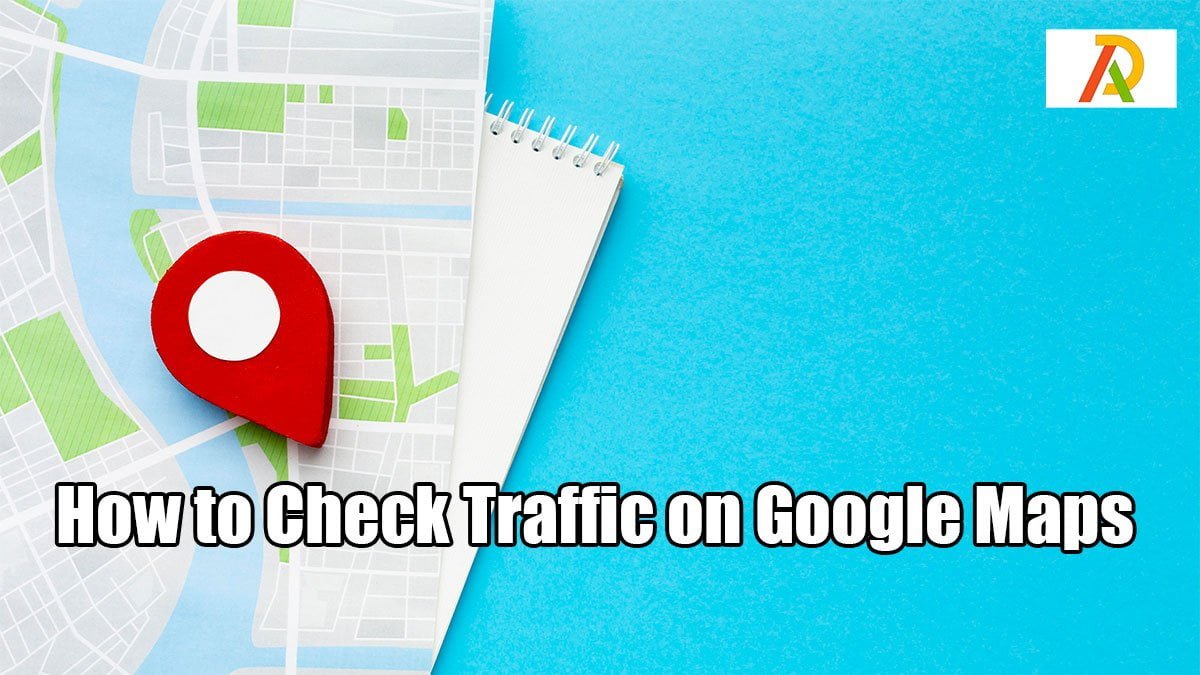How to Check Traffic on Google Maps

Checking traffic on Google Maps is a helpful way to avoid getting stuck in traffic. The feature is available on desktop and mobile versions of Google Maps. Here’s a step-by-step guide on how to check traffic on Google Maps: First, open Google Maps and search for your destination. Next, click on the “Directions” button. Then, select the route you want to take. Finally, click on the “Traffic” button. This will show you real-time traffic conditions for your selected route. The colors indicate the level of congestion:
- Green means there is little to no traffic
- Yellow means there is moderate traffic
- Red means there is heavy traffic
- Dark red means there is stop-and-go traffic
Checking Traffic on Google Maps
Checking traffic on Google Maps is easy! Just open the app and search for directions to your destination. Then, tap the “Traffic” button in the screen’s upper-right corner.
You’ll see real-time traffic conditions for your route and estimated travel times. The colors indicate the severity of the traffic delay: green means no delay, yellow means some delays, and red means heavy delays.
If you want more information, tap the “More info” button. Here, you can see a list of all the current traffic incidents in your area and their location on the map.
The Different Views of Traffic on Google Maps
There are two different ways that you can view traffic on Google Maps. The first way is to view real-time traffic, which will show you the road conditions. The second way is to view historical traffic, showing you how the roads have been typically congested at different times of the day.
To view real-time traffic, simply open up Google Maps and look for the “Traffic” layer in the top right-hand corner. When you turn this layer on, your map will display different colors to indicate the road congestion level. Green indicates light traffic, yellow indicates moderate traffic, red indicates heavy traffic, and dark red indicates heavy traffic.
Select the “History” tab just below the “Traffic” layer to view historical traffic. Then, use the sliders to choose a date and time range you’re interested in. Your map will then display average traffic conditions for that period. This can help plan purposes so you can avoid times when the roads are typically more congested.
How to Check Traffic for a Specific Route on Google Maps
To check the traffic for a specific route on Google Maps, follow these steps:
1. Enter your starting point and destination into the Google Maps search bar.
2. Click on the “Directions” icon.
3. Select the “By car” option.
4. Click on the “Options” icon.
5. Select the “Traffic” option.
6. Your route will now display traffic information. Green represents normal traffic conditions, yellow represents slower-than-normal traffic, and red represents stop-and-go traffic or congested conditions.
How to Check Traffic for a Specific Location on Google Maps
If you’re planning a trip and want to know what the traffic conditions are like for your route, you can check the traffic for a specific location on Google Maps. Here’s how:
Open the Google Maps app on your phone or tablet. Tap the menu icon in the top left corner of the map. Select “Traffic.” Enter your destination into the search bar at the top of the screen. The map will show real-time traffic conditions for your route.
You can also check the traffic for a specific location on your computer by opening Google Maps in your web browser and clicking on the “Traffic” layer in the top right corner of the map.
How to Save and Share Your Traffic Information
Assuming you have Google Maps open, follow these instructions to save and share your traffic information.
1. Click on the three lines in the top left corner of the screen to open the menu.
2. Scroll down and click on “Settings.”
3. Click on “General Settings.”
4. Scroll down to the “Personalization” section and click “Create a new map.”
5. Enter a name for your map and click “Save.”
6. To add locations, search for a place or address in the search bar and click on the pin that appears. Then, click “Add to map.”
7. To share your map, click on the three dots next to the name of your map and select “Share or embed map.”
8. You can either copy the link to share via email or social media or embed the map onto a website or blog.
Conclusion
Learning how to check traffic on Google Maps is a valuable skill for anyone who regularly uses the app for directions. By following the steps outlined in this article, you’ll be able to quickly and easily see whether there is any traffic congestion along your route. This can save you time and frustration by helping you avoid getting stuck in traffic. So next time you plan a trip, check the traffic conditions on Google Maps before you hit the road.


